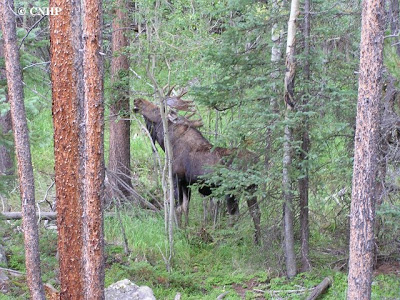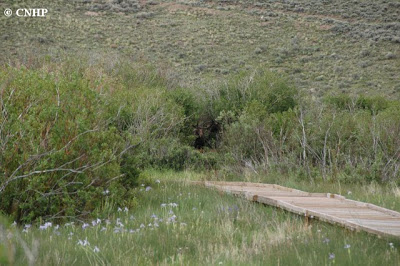Moose were introduced to Colorado in the late 1970s. From the original location in North Park, Jackson County they have expanded into neighboring counties, and have also been transplanted to the Upper Rio Grande drainage and Grand Mesa areas. These large members of the Cervidae or deer family are generally found in forests near lakes or marshes.

We know that adult moose are extremely large animals (they can be over 6 feet tall at the shoulder, and weigh up to 1,000 pounds), so it seems that such a large animal should be easy to photograph.
However, if you have ever tried to take a picture of a moose, you have probably experienced the Massive Object Optical-Spatial Event or MOOSE phenomenon. This apparently happens when our knowledge of the size of an object greatly inflates our perception of how it will appear in a photo. It is common for researchers to return from the field, download or develop their photos, and say “Hey – where is the moose? I thought I got a picture of it!”
For instance, there are two moose in this photo:


It may be helpful to add a moose locating element to your photo:

Even if you manage get close to a moose (not recommended), or use the zoom feature, there is no telling if the moose will cooperate:





